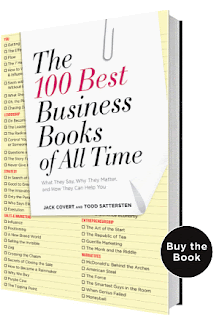 Leadership is the ability of an individual to control people and move them in the right direction for achieves objectives. Leadership has been defined in a several ways. It is a process of leading people in the right direction to achieve a common goal. Many situations require leadership. Most common ways of looking at leadership are as a trait, ability, skill, behavior, relationship or a process. Leaders apply leadership for the use of values, ability, skills and knowledge in an organization. A leader needs to be fully aware of the followers (Northouse, 2011). Leadership can also be defined as being able to motivate and inspire others.
Leadership is the ability of an individual to control people and move them in the right direction for achieves objectives. Leadership has been defined in a several ways. It is a process of leading people in the right direction to achieve a common goal. Many situations require leadership. Most common ways of looking at leadership are as a trait, ability, skill, behavior, relationship or a process. Leaders apply leadership for the use of values, ability, skills and knowledge in an organization. A leader needs to be fully aware of the followers (Northouse, 2011). Leadership can also be defined as being able to motivate and inspire others.
One of the most widely recognized approaches to leadership is the situational approach. It was developed by Hersey and Blanchard (1969, 1972) based on life-cycle theory of leadership. It is also known as the leader-member exchange theory. The situational approach has been redefined and revised several times since its inception. Situational theories are also called contingency theories because the theory is contingent upon the needs of the situation. According to the name situation leadership is based on leadership in according to the situation. So that different kind of situation demands different leadership. From this approach, leader requires to adapt his style according to the different situations. Leaders determine the need in a particular situation then evaluate his employees to perform a given task (Northouse, 2011).
Situational leadership can be understood along four dimensions. These are the personal characteristics of the leader, the nature of the job, the nature of the organization, and the nature of the follower. The fist dimension showed the personal characteristic of the leader. This is traits, skills, ability, experience, personal motivation to achieve, decision making, control the followers. The second dimension required that the nature of the job or the task. It must be defined so the leader understand what must be done. Leader motivated the followers so the followers are performing tasks easily. The third dimension concerns the nature of the organization. It includes the organization rules and policies, corporate culture, the time and resource available, and the organizational expectation. The fourth dimension is the nature of followers. There are personalities, values, needs, ideas, motivations, expectations and experiences. All of these dimensions affect the leader performance and effectiveness (Bertocci & Bertocci, 2009).
Several leadership theories have emerged. These are situational leadership, trait-based leadership, transformational leadership, distributed leadership, servant leadership, collaboration leadership, etc. Leadership is a situational. In the situational approach, different situation demand different kinds of leadership. Leadership effectiveness depends on both the leader and the situation. Some leaders are effective in one situation but not in others. So therefore situation theory indicates that there is no one best way of leading. Leaders must understand their own behavior, the behavior of their subordinates, and the situation at hand (Ladkin, 2010).
Situational leadership is central to applying the theory. Situation leadership theory argues that a high task low relationship combination of leader and subordinates behaviors. Hersey and Blanchard’s diagnosis that the group is now unable to solve a problem and it needs an intervention from the leader. The Hersey and Blanchard situational leadership theory creates minor contributions to the leadership literature. It is focus on the truly situational nature of leadership. Situational leadership applies for measuring leader style, style range and effectiveness (Bryman, 2011).
For the above discussion, it can be said that leadership is situational because they lead according to personal characteristics of leader, nature of job, nature of organization and nature of followers and what is the demand of the given situation.
References:
Northouse, P.G. (2011) Introduction to Leadership: Concepts and Practice. 2nd ed. USA: SAGE Publication Inc.
Northouse, P.G. (2009) Leadership: Theory and Practice. 5th ed. USA: SAGE Publication Inc.
Ladkin, D. (2010) Rethinking leadership: a new look at old leadership questions. UK: Edward Elgar Publishing.
Bertocci, D.I. & Bertocci, D.L. (2009) Leadership in Organizations: There Is a Difference Between Leaders and Managers. USA: University Press of America.
Bryman, A. (2011) The SAGE Handbook of Leadership. USA: SAGE Publication Inc.

















